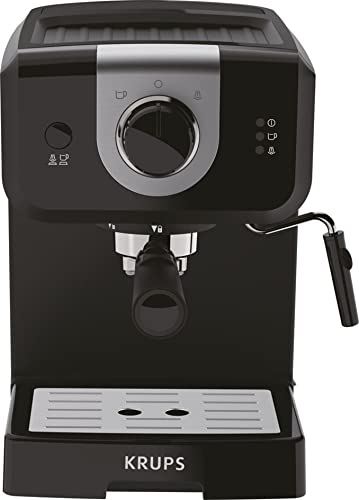Benefits of an Espresso Machine
In an espresso machine hot water is forced under pressure to a high temperature through finely ground coffee beans. This creates a luscious smooth, smooth drink that is commonly known as espresso.
The first espresso machines were steam-powered. They use a single boiler to make several drinks simultaneously. When the water reaches the "grouphead," where a portafilter is locked into place the water is almost boiling.
Health Benefits
The caffeine in espresso can brighten people's mood. This is particularly beneficial for people who are suffering from depression since it can lift their spirits and give them a boost to overcome the day. It can also aid in reducing fatigue, which is a common symptom of depression. Additionally, coffee has been shown to improve short-term memory, as well as the ability to solve problems. These benefits are also beneficial for office workers, who need to remember important details about projects and deadlines.
When people have an espresso machine in their home and can make a delicious cup cappuccino or coffee whenever they want. This helps them avoid the expense of going out to a coffee shop, and the time it takes to drive to get there. It is also more practical when entertaining friends or family because they can serve delicious drinks at their home.
When choosing an espresso machine, it is important to consider how easy it is to operate and whether there are additional features, such as milk frothers or a built-in coffee grinder. Make sure to check how many drinks could be made at one time and if the machine has steam wands for making lattes.
Energy Boost
The espresso maker you have at home is convenient when guests come over and you're wanting to make them coffee that tastes delicious. You can also save money by not having to go to a cafe. You should buy an espresso machine with an instruction manual that lets you alter the amount of water and coffee used. This lets you decide the strength of your espresso and how much crema (foam) is produced.

Most appliance stores carry an espresso maker that is manual. These machines come with a portafilter that is filled with ground coffee and then compress by using a technique known as "tamping." You'll have to pump a lever to create the pressure needed to extract the flavor from the ground beans. Certain models come with steam wands that can be used to heat and froth milk which allows you to make drinks such as cappuccinos and lattes.
A more recent development in espresso machines is the super-automatic which is similar to an automatic but has greater consistency. These machines are designed to produce a specific size espresso. They are easy to use and have been awarded top marks in Lab testing. These machines can grind beans, measure them and tamp them with the click of the button. Some models come with a built-in grinder for coffee and can make both espresso and brewed coffee, but are more expensive than manual or semi-automatic models.
Anti-Inflammatory
While coffee and espresso can give you a healthy boost in energy but it is best to consume it in moderation to avoid digestive issues, anxiety and high levels of caffeine. It's also important to drink high-quality coffee to avoid the artificial ingredients used in low-quality espresso, which can be harmful to your health.
Research has shown that the polyphenols found in coffee, such as CGA, have anti-inflammatory properties. They also have bacteriostatic effects. anti-bacterial properties against a variety of harmful microorganisms, which can thrive in different parts of the human body. This includes oral bacteria that cause caries as well as intestinal bacteria.
best small espresso machine diterpenes responsible for coffee's unfiltered adverse effects, cafestol as well as Kawheol have also been discovered to have anti-inflammatory properties as well as antioxidant and anti-fibrotic properties. A study published in the International Journal of Molecular Sciences suggests that these bioactive compounds are responsible for coffee's positive effects on the health of humans. Other studies have also found a link between CGA to lower incidences of disease and a longer lifespan.
Diabetes: Lower Risk
In the world of diabetes growing more common, many people are looking for ways to lower their risk. Fortunately, coffee is one of the most effective ways to do this. The caffeine in coffee boosts metabolism and reduces blood sugar levels after a meal. By lowering cholesterol it can also lower the risk of developing type 2 diabetics. You should limit the amount of coffee you consume each day. If you're sensitive to caffeine, it is recommended to limit your intake of caffeine to a cup a day.
A new study from Sweden confirms previous studies that have linked coffee consumption to a reduced risk of developing type 2 diabetes. This study is different from other studies in that it separates boiling and filtered coffee in order to understand how different methods of preparation affect the health benefits of coffee.
Researchers employed a method known as metabolomics, along with traditional diet-related questionnaires. This technique is more accurate than self-reported consumption based on questionnaires as it determines the amount and presence of specific compounds within the body. Researchers also controlled for variables like smoking status, sex and the method of preparation for coffee to prevent confounding factor biasing results.
Scientists aren't sure of the exact mechanism at play, despite the fact that the results were clear. They suspect that the positive effects of coffee may be due to diterpenes which block the absorption of glucose within the liver and increase the metabolism of glucose. They are hoping to further explore the differences in a forthcoming study.
